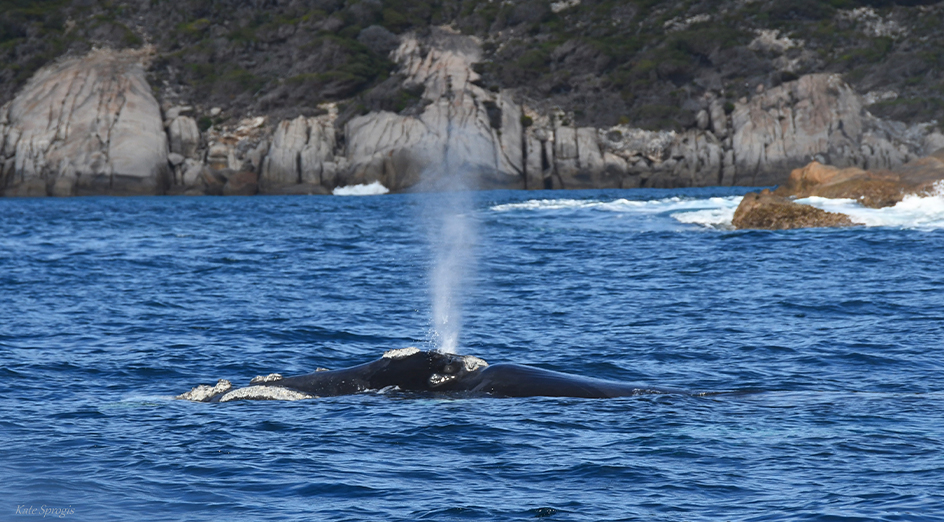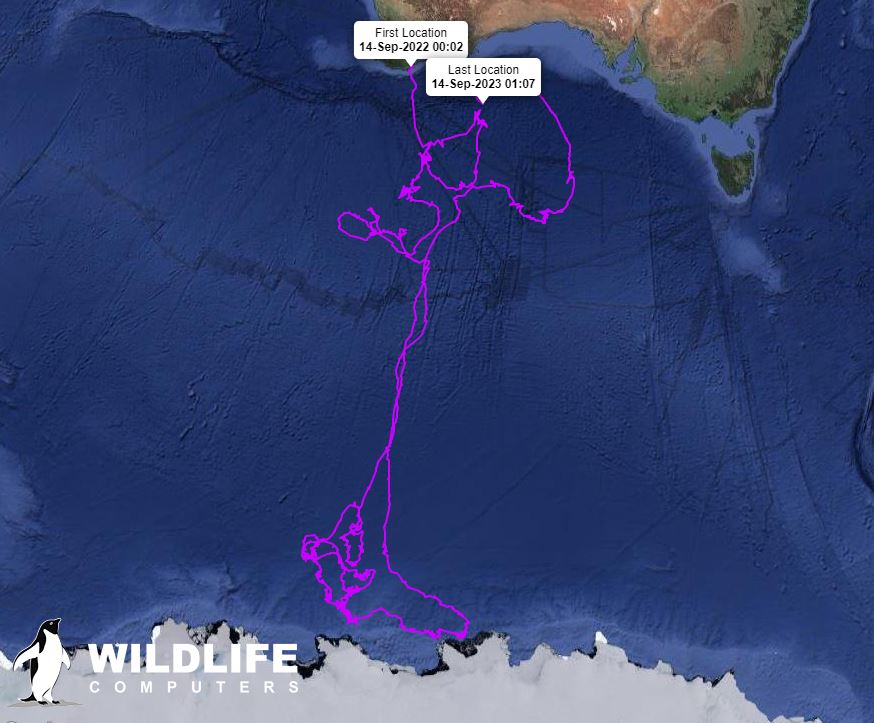For the first time ever, researchers have tracked the complete migration cycle of an Australian southern right whale in detail, following it over 6,000 km from near Albany in Western Australia to Antarctica and back again – and, remarkably, along sections of its migration it followed the exact same route.
“This input is incredibly important given that the Menang/Merningar have had an extremely long connection with the whales which annually come to the coast. Our shared aim is to unlock the secrets of southern right whales, contribute to their conservation and enhance our understanding of their vital role in marine ecosystems.”
Dr Kate Sprogis, Adjunct Research Fellow at UWA’s Oceans Institute
In September last year, marine biologists from The University of Western Australia and Macquarie University, in collaboration with researchers from the University of Auckland Waipapa Taumata Rau, deployed satellite tags on southern right whales off the coast of Western Australia.
Biopsy samples were also taken to obtain small pieces of skin to examine the genetics of the population, helping researchers understand the relationship between those on the east coast of Australia, Aotearoa New Zealand and globally, along with inNebinyans rsights into what the whales had been feeding on.
Exactly one year to the day after being tagged off Cheyne Beach near Albany, one of the whales – an adult southern right named Nebinyan – turned up back in waters off WA close to where it had started.
 Image: Southern right whale, Nebinyan, photographed off Cheyne's Beach.
Image: Southern right whale, Nebinyan, photographed off Cheyne's Beach.
Dr Kate Sprogis, Adjunct Research Fellow at UWA’s Oceans Institute and School of Biological Sciences based at the UWA Albany campus, said that being able to follow Nebinyan’s movements for an entire year offered unprecedented insights into the movement and behaviour of the marine giant.
“We know that southern right whales breed and calve off the coast of Australia during the cooler winter months, however where they migrate to forage over the warmer months had been poorly understood until now,” Dr Sprogis said.
“We were absolutely stunned to see that Nebinyan, named after a well-known Aboriginal whaler of the 1840’s, followed exactly the same path south to Antarctica and back again, in a similar way that some migrating birds take the same routes.”
 Image: Nebinyan's journey to Antarctica and back.
Image: Nebinyan's journey to Antarctica and back.
Southern right whales are considered as a sentinel species for climate change in the southern hemisphere and their reproductive success was intricately linked to environmental conditions at offshore feeding grounds, making Nebinyan's year-long journey an invaluable resource for understanding the impacts of climate change on the species, Dr Sprogis said.
“Importantly, our project engaged with local First Nation UWA members, who provided the Menang/Merningar name for the project Mirnong Maat, which translates loosely to whale journeys,” she said.
“This input is incredibly important given that the Menang/Merningar have had an extremely long connection with the whales which annually come to the coast. Our shared aim is to unlock the secrets of southern right whales, contribute to their conservation and enhance our understanding of their vital role in marine ecosystems, especially considering the changing oceanic conditions.”
Media references
Liz McGrath (UWA Media Advisor) 08 6488 7975
